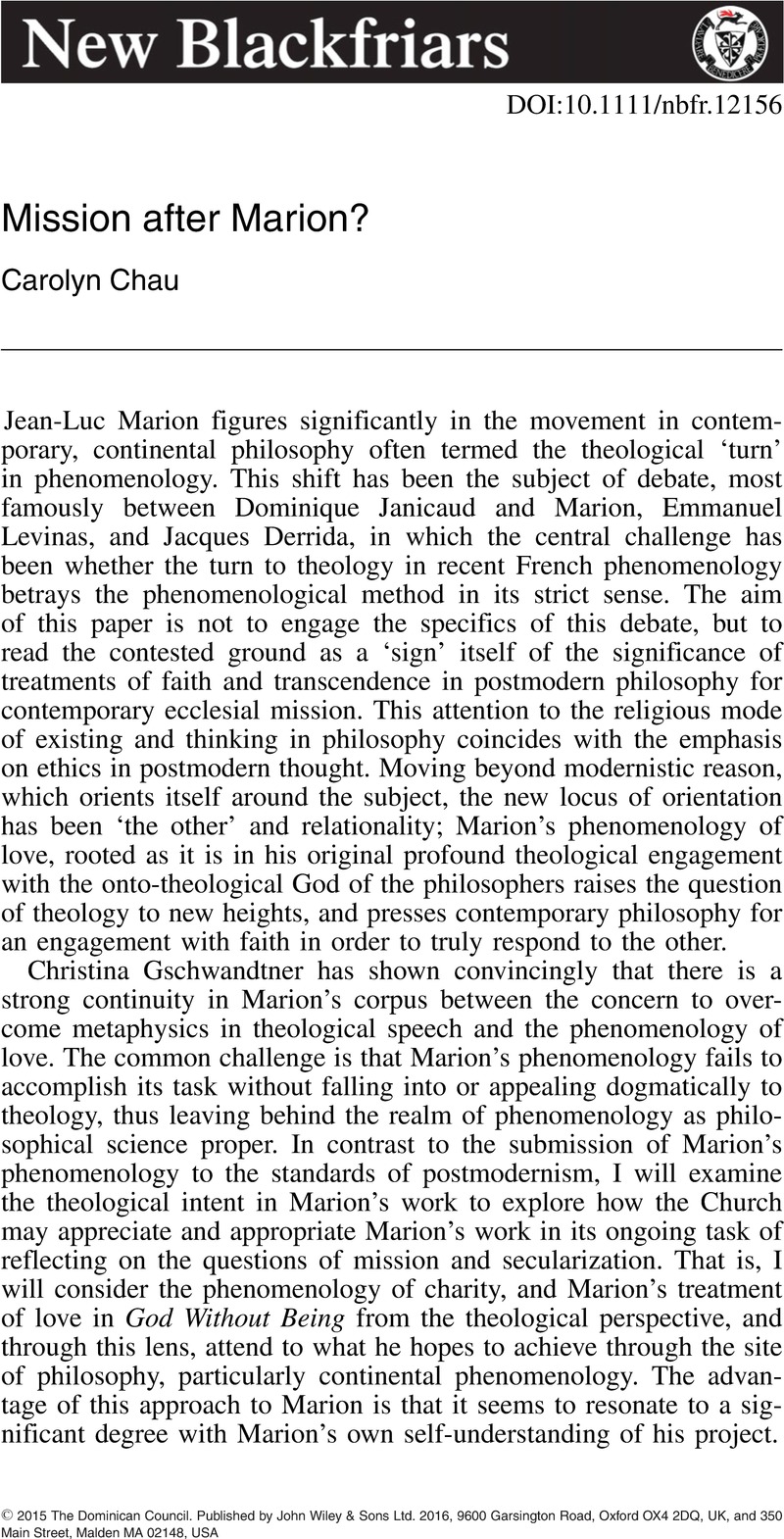Article contents
Abstract

- Type
- Original Article
- Information
- Copyright
- Copyright © 2015 The Dominican Council. Published by John Wiley & Sons Ltd
References
1 A frequent assessment of Marion's work is that it can be grouped according to two foci: the first theology, the second, phenomenology. On this reading, God Without Being, The Idol and Distance, Prolegomena to Charity and The Crossing of the Visible comprise the theological works; Reduction and Givenness, Being Given, and The Erotic Phenomenon, the phenomenological works.
2 Marion, Jean-Luc, God Without Being, second edition (Chicago: University of Chicago Press, 2012), p. 139CrossRefGoogle Scholar.
3 On Marion's apophaticism, Tamsin Jones has noted that the distinction between Marion's and Hans Urs von Balthasar's appropriation of Dionysius the Areopagite's apophaticism is traceable to the difference in their respective audiences: for Marion it is his fellow phenomenologists, for von Balthasar it is the Church. Trusting this distinction, it is important to observe that while Marion is not writing to the Church, he is writing for and from the Church. In some sense, rather than contesting Janicaud, this observation feeds the critique, acknowledging that the presence of theology that Janicaud detects in Marion's phenomenology is indeed present. However, the virtue of such a turn both ecclesially and philosophically is the space it opens for love, denying thereby that the introduction of the element of revelation alone disqualifies Marion's work from being considered phenomenological. As mentioned previously, the controversy over the inclusion of revelation in Marion's phenomenology certainly suggests an ecclesial and missional dimension to his work.
4 God, the Gift, and Postmodernism, Caputo, John D. and Scanlon, Michael J. (eds.) (Bloomington: Indiana University Press, 1999), p. 70.Google Scholar
5 Wynands, Sandra, rvw of ‘The Erotic Phenomenon’ in Christianity and Literature, vol.57, no.1 (Aut 2007): 142CrossRefGoogle Scholar.
6 Westphal, Merold, “Vision and Voice: Phenomenology and Theology in the Work of Jean-Luc Marion.” International Journal for Philosophy of Religion vol. 60, no. 1-3 (12 2006): 134Google Scholar.
7 Marion, Jean-Luc, The Visible and the Revealed, translated by Gschwandtner, Christina and others (New York: Fordham University Press, 2008), p.73-74Google Scholar.
8 Marion, Jean-Luc, Prolegomena to Charity, translated by Lewis, Stephen E. (New York: Fordham University Press, 2002), p. 169.Google Scholar
9 Ibid.
10 McKenny, Gerald, “(Re)placing Ethics: Jean-Luc Marion and the Horizon of Modern Morality” in Counter-Experiences: Reading Jean-Luc Marion. Hart, Kevin (editor) Notre Dame: University of Notre Dame Press, 2007.Google Scholar
11 Ibid.
12 Ibid.
13 This is yet another conceptual reframing Marion wishes to overcome: the false distinction in Christianity, as he sees it, between agape and eros. This is Marion's retrieval of ‘flesh’ in the erotic reduction.
14 Ibid.
- 1
- Cited by




